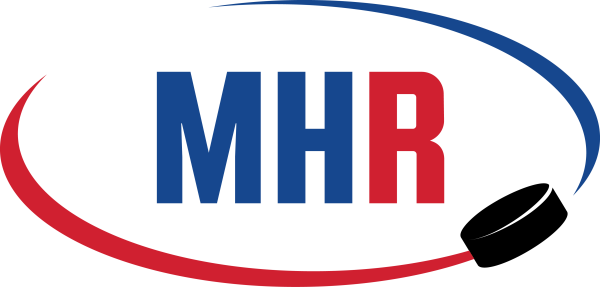
No Hockey? No Problem: Weekly Workout #1
Hockey Fitness
No sport requires the same type and level of fitness that hockey does. Hockey fitness is the ability to practice day in and day out at game tempo. Players should strive through their off-season conditioning programs to reduce the chance of injury while being able to showcase their hockey skills during tryouts, training camp and preseason practice. This can only be accomplished by working hard in the spring and summer and coming into training camp in great shape both in terms of the individual components of fitness and overall hockey fitness. The best way to accomplish this is by training the entire body in a way that maximizes the use of muscles and movements required by hockey under the guidance and supervision of a certified coach or by following a program provided by a certified strength and conditioning expert.
Off-ice training is imperative until about four weeks prior to the opening of preseason practice at which time on-ice training is most beneficial. On-ice training can take place earlier in the process, but the focus should be on getting bigger, stronger, faster and more explosive during the off-ice phase of training. Too much time on the ice means the off-ice component is ignored or takes a back seat can be detrimental. At some point you want to be able to let the muscles you use throughout most of the year to practice and play in all those games rest and then be rebuilt through off-ice training. Professional players don’t even skate 12 months out of the year. Even the best take time off for active rest and recovery.
This can get a little tricky for players ages 16 and up who might have to ramp up for a mid-summer tryout camp to make a higher-level junior team. Players in these situations should meet with a certified strength and conditioning coach for a consultation that will determine the proper schedule for rest and training that will allow the player to perform to the best of his or her ability at the summer camp and then peak as he or she enters training camp and moves into the season.
So where are we right now?
Right now, given the uncertain circumstances we are facing, you have a great opportunity to rest your body and let all the bumps and bruises from a long season heal while still remaining active so that you can maintain your cardiovascular fitness and start to rebuild your fitness base for more strenuous future workouts.
We call this active rest or active recovery, but also base building. Combining these two phases is important right now, because we don’t know how long the current situation will play out. We might get three-, four- or eight week’s advance notice prior to resuming regular activities, so you want to maintain a good level of fitness and have a strong enough base to be able to start ramping things up on very short notice.
The postseason also is a great time to keep working on areas that you know are weak in hopes of creating more overall symmetry in terms of your body’s overall strength and fitness. If you have a physical therapy routine that you have been doing to help with injuries or weak areas, please include that with any exercises you are doing.
Baseline Testing and Warm-up
When you start any strength and conditioning program you want to chart your progress – number one to make sure you are gaining strength and improving and that the program you are doing is producing the results you want, and secondly because being able to see your gains is great motivation toward pushing yourself harder and farther every time you work out.
One way to chart your progress is by using a baseline test (which also happens to be a pretty good workout by itself). You’ll find a good baseline test below with links to descriptions of some of the exercises you may not be familiar with. Do this before you do anything else and record your results. Come back to this test every few weeks to see how your numbers are improving.
The other way to chart your progress is to keep a daily record or diary of your workouts and add on to them as necessary if what you are doing becomes too easy (that’s the goal, but once they get easier make sure to keep challenging yourself!).
Before doing any testing or workout program, make sure that you perform a dynamic warm-up/stretch.
Examples of warm-up movements:
- 30 jumping jacks
- jogging in place or slow jogging
- high-knees walking/running with arm swing or arm pump
- walking lunges (backward and forward), core tight, back straight, twist before after each
- high-knees skipping with exaggerated arm swing
- long-stride bounding with exaggerated arm swing
- large arm circles
- small arm circles
- single-leg hip circles 10-12 each side
- zombie squat arms straight out, reach through legs and stand back up 10-12 reps
- mountain climbers
There are many more options. Feel free to do whatever gets your heart rate up, loosens most joints and muscle groups and gets a little bit of a sweat started. If you have a treadmill or stationary bike you can warm up using those as well, but make sure you get all body parts moving and warm before starting any workout. Your warm-up should last 5-6 minutes.
Baseline Test
This baseline test is brought to you courtesy of Brandon Huggins, an NCAA Division I strength and conditioning coach. For more information or customized workouts, please feel free to contact Brandon:
Brandon Huggins
Strength & Conditioning Coach/Owner
Top Athlete Training
IG: @thetopathlete
EMAIL: topathleteus@gmail.com
860-940-4530
- Max Push-ups until fatigue/rest 10 seconds, max push-ups to fatigue/rest 20 seconds/max pushups to fatigue (record all three numbers)
- 1-leg broad jump for distance (tape measure needed) – both legs
- Max Burpees in 60 seconds (no push-up)
- Max Y-Handcuffs without rest
- 1-leg Hip Bridge HOLD – max time (90-second limit each side)
- Side Plank Leg Raise HOLD - max time (90-second limit each side)
Remember to record your results and come back to this test occasionally to see how you are progressing.
Time to Work Out!
Below find a good all-round full-body workout and also a strength workout, both using just your body weight. Alternate days on these and remember to warm up prior to exercising!
Workout 1 (full body)
1) 3 Sets of each, 30-second rest between sets:
- 20 Burpees
- 30 Second bicycle/boxer’s crunch
- 20 Pushups
- 20 Sumo squats
- Rest 30 seconds
2) 3 Sets of each, 30-second rest between sets:
- 15 Burpees
- 30 Second side to side oblique heel touch
- 15 Pushups
- 15 Jump squats
- Rest 30 seconds
3) 3 Sets of each, 30-second rest between sets:
- 10 Burpees
- 30 Second mountain climbers
- 10 Pushups
- 10 Lunges (each leg)
- Rest 30 seconds
Workout 2 (strength – from Top Athlete Training)
Add weight if accessible and needed – everything can be done without weight added
ECCENTRICS – SLOW MOTION (10-second reps !!)
- Push-ups – 6 for 60 seconds
- Squats – 6 for 60 seconds
- Blackburns (YWTA) – 6 for 60 seconds (first four on video)
- Split Lunge – 6 each leg for 10 second hold each rep for 60 seconds
ISOMETRICS – HOLDS (two rounds!)
- Push-up hold x 15 seconds/rest 10 seconds/15 seconds
- Squat hold x 30 seconds
- Y-Handcuff hold x 40 seconds
- Split Lunge Hold x 30 seconds each leg
CONCENTRIC – EXPLOSIVE
- Hands Up Push-ups x 20
- Squat Jumps (reset each time) x 20
- YWTA x 12
- Split Lunge Jump (don’t alternate) x 12 each leg
MAX EFFORT
- Max Push-ups
- Max Squats
- Max T-Y Press (couldn't find video, hoping to add)
- Max Reverse Lunges
Bonus Workout Tweeted by Connor McDavid (15 minutes)
- Body-weight squats x 10
- 45-second wall sit
- Split Squat Hold – 30 seconds each side
Repeat 4 times and Tweet to @cmcdavid97 to let him know you did it!

